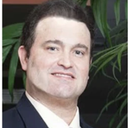I was administered restylane for my festoons but I now have an swollen part above my festoon. My docs response..... "The junction where the muscle excess and the cheek begins (festoon) is a tough area to inject. Most of my older patients have no issues. My colleagues have dealt with this issue as well...young patient with a dynamic festoon...meaning that your muscle that is in excess is preventing the product from staying where it is injected." Is the response correct? BTW I am in late 40s.
Answers (5)
From board-certified doctors and trusted medical professionals

Dr. Kenneth D. Steinsapir, MD
Oculoplastic Surgeon, Board Certified in Ophthalmology
Answer

Dr. Nelson Lee Novick, MD
Dermatologic Surgeon, Board Certified in Dermatology
Answer
More Restylane Questions
See all Restylane Q&AWE SEND PRETTY
EMAILS
What’s trending? Who’s turning heads? Which TikTok myths need busting? We’ve got you. No fluff, no gatekeeping—just real talk. Get our free, unfiltered newsletter.

